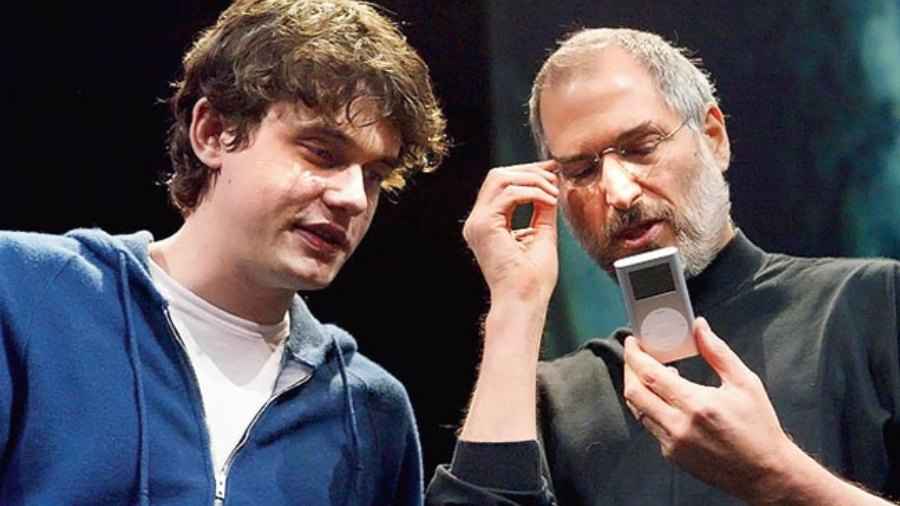
The end of an era has come with the iPod’s move to a posh hillside condo. In addition to securing Apple’s place in history, it transformed the way people listen to and distribute music.
The iPod Touch is the final model in the iPod line, which was introduced in October 2001. For years, iPod has been overshadowed by the iPhone. Despite this, there will be tears shed, tributes paid, and photos shared on social media.
Because it was first released in 2007, the iPod Touch — or touchscreen model — is still available for anyone with a passion for cutting-edge technology. The phasing-out of the iPod began in 2014, when the iPod classic, a version with a click wheel and a small screen, was the first to be axed, followed by the iPod Nano and iPod Shuffle (the product that marked the end of the iPod is the seventh-gen iPod Touch, which was introduced in 2019).
It’s more than a fashion statement.
Apple’s co-founder Steve Jobs’ love of Bob Dylan and The Beatles is well known, and this passion has always permeated the organization. The iPod was considered a niche product when it launched in 2001, and some feared it wouldn’t be popular with Macintosh users. As if the Macintosh hadn’t made the personal computer more accessible to a wider audience, the iPod motivated many people to acquire a Macintosh so that they could use their iPod. There was nothing else like the iPod. In a matter of seconds, consumers got access to a music player that was the size of a flash player but contained 5GB of capacity, enough to store 1,000 songs or the full library of music most people had access to. In a way, it was like carrying about a hundred or so CDs.
It was more than just a new product launch. The music player has a great user interface and a long-lasting battery life of up to 10 hours, owing to a rechargeable lithium battery. In order to play music, a user should just have to click three times.
Jobs pushed consumers to pay for music at a time when it was freely traded via platforms like Napster, signaling the end of the music industry as we knew it. Illegal music distribution was made much more difficult by the fact that songs loaded onto the iPod from a Macintosh computer couldn’t subsequently be transferred to another Macintosh computer.
Apple’s philosophy was popularized in the first iPod commercial. With a voiceover at the conclusion saying, “1,000 songs in your pocket,” it featured a man dancing to a song by an unknown electronica band (Take California by the Propellerheads). The company is dedicated to assisting and promoting deserving musicians.
You have arrived at the “singles age.”
Some early reviews were critical of the product, deeming it a “toy” for people who had a lot of money to spare, as well as the fact that it only worked with Apple computers. Apple sold 125,000 iPods in the first 60 days, proving critics incorrect. Windows users got their own version a little over a year later.
Also Read: Amazon is offering the iPhone 13 for as little as Rs 51,600, but there are certain restrictions
In April 2003, Apple introduced its online music store, where one could buy any song legally for 99 cents and then play it on the iPod. This was a significant moment in Apple’s history. Steve Jobs became something of a sheriff in the music industry, enforcing order and guaranteeing that consumers would continue to buy music.
The iPod’s early success was not hindered by the lack of music from The Beatles or Led Zeppelin. One million songs were downloaded in a week, 50 million in a year, and 100 million in the next four months through the iTunes Music Store.
There was more to come. Until then, LPs were considered sacrosanct. The iTunes Music Store made it possible for customers to only pay for the songs they wanted. Album sales began to drop, and single sales quickly took their place. Instead of following Billboard’s Top 100, many are instead looking at iTunes. The Beatles and Led Zeppelin finally caved into the concept of the iTunes Music Store.
Musicians like Bono and John Mayer, who were frequently photographed using iPods, played a key role in the iPod’s popularity. With the introduction of the first in-car entertainment system that include an iPod docking station, BMW provided more encouragement.
Change is a fact of life.
Apple CEO Steve Jobs wouldn’t want anyone else to kill the iPod, so why would anyone else? However, Apple had already sold 110 million iPods when Jobs introduced the iPhone in January 2007. You could make and receive phone calls, send and receive messages, browse the web, send and receive the email, and even listen to music on the iPhone.
An additional takeaway from Apple’s iPod was a lesson about the short lifespan of battery-operated products. When Casey Neistat was a teenager in 2003, he was shocked to discover that his iPod’s rechargeable lithium-ion battery had failed after only 18 months of regular use. Of course, the firm worked on improving battery life for its upcoming gadgets, but for the time being, it was a fact of life.
Apple is now making significant modifications, but this is to be expected when dealing with software. Spatial Audio with Dolby Atmos is currently being promoted via Apple Music. Music in Spatial Audio is so immersive that once you hear it, you’ll never want to go back. Spatial Audio allows you to “walk” into a musician’s world, where music is everywhere. In addition, Apple Music provides lossless audio for free.
When the iPod category dies, it also means that the white cable that connects the iPod to the headphones is no more, as Apple did with its iPhone and urged other firms to do the same.
Today, Apple is a firm with a wide range of interests. Apple Computer Inc. was a misnomer; the company should now be known as Apple. According to Loup Ventures, a venture capital firm specializing in technical analysis, Apple has sold an estimated 450 million iPods.
Source: The Telegraph



